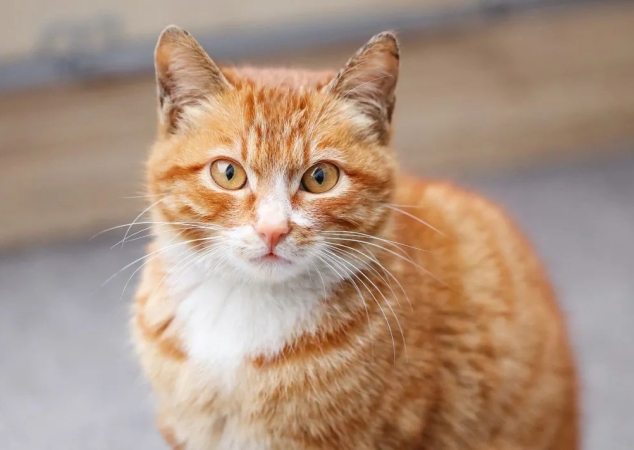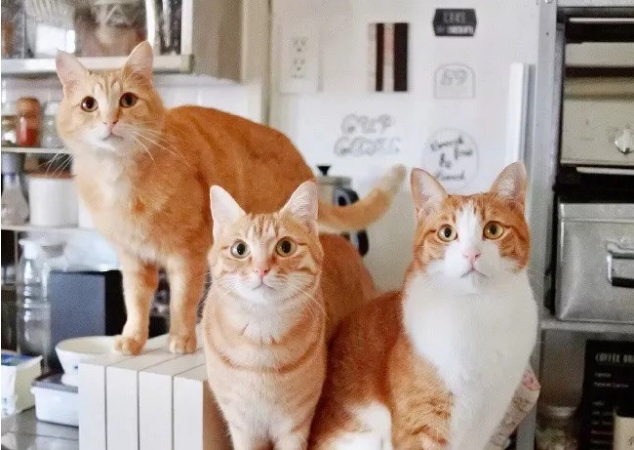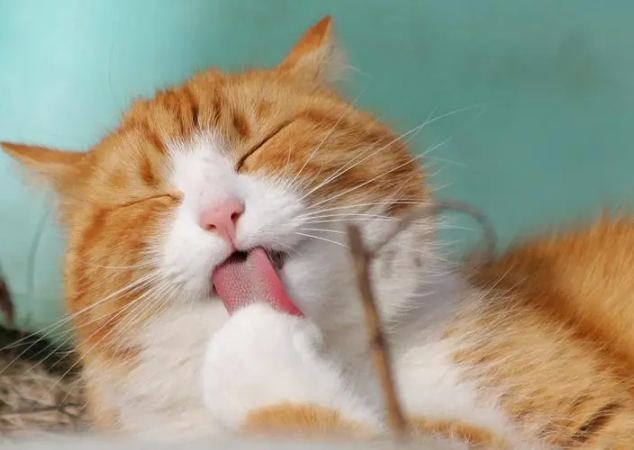You are likely to remember an orange cat if you come across them on the street or even on your screen. Whether it’s a cuddly lap seeker, a spunky adventurer, or a comically gluttonous food lover straight out of a cartoon, an orange feline leaves a lasting impression. There are many stories and legends about it, but is everything about their personalities true? Let’s find out what makes an orange cat behavior special.

To understand an orange tabby cat personality, you need to know the genetic factors determining its fur color. Its bright orange fur is due to pheomelanin, a pigment that produces red and orange shades in a cat’s coat.
Within this genome, a gene called the orange gene or “O” gene is located on the X chromosome. This gene has two types: orange and non-orange. Female cats have two X chromosomes, while males have X and Y chromosomes. So, for a cat to be orange, female felines need two copies of the “O” gene, while male felines only need one.
Interestingly, the intensity of a cat’s coat color also depends on innate and environmental influences. Factors such as sunlight exposure and overall health affect the color’s richness, adding complexity to its genetics.

Many people love orange cats, not only because of their adorable looks but also because of their big personalities. But are these notions true? Let’s look at some of their common claims:
One popular belief about an orange cat personality is that ginger felines are more affectionate, cuddlier, and outgoing than cats of other coat colors. While some studies prove this could be true, these findings are inconclusive. These studies might not be accurate because they depend on what cat owners say, which could be biased.
It’s often observed that male orange felines outnumber their female counterparts. It is estimated that around 80% of all orange tabby cats are male, while the remaining 20% are female.
While orange cats can be found in different environments, research suggests they are more prevalent in rural settings. This is due to a phenomenon called “frequency-dependent selection.” The bright orange fur color can serve as a natural camouflage in less densely populated areas. Furthermore, male orange cats are more successful in finding their mates, making the orange gene more dominant than males of other coat colors.
Contrary to popular belief, orange doesn’t pertain to a specific breed. Many cat breeds have the orange gene, including Maine Coons, Munchkins, and Persians. Thus, an orange cat behavior isn’t tied to a particular breed but rather to genetics and environmental influences that contribute to their unique fur color.

Now, here’s a question that many people ask: does being orange affect a cat’s personality? Like a black cat’s personality, there’s no scientific evidence to prove that its fur color directly influences its behavior. However, several factors affect the orange tabby cat personality type.
One factor that influences an orange cat behavior is the confirmation bias. When we think orange cats are friendly or goofy, we are more likely to notice behaviors that support our beliefs. We’re also more inclined to remember orange cats with a personality that makes them stand out, reinforcing the stereotype.
Another factor is the higher percentage of male ginger cats. Males are more outgoing and bolder than females, no matter the coat color, creating a perception that orange cats exhibit such traits.
Pop culture can also impact how we perceive and feel about an orange cat behavior. Whether it’s Puss in Boots, Garfield, or Crookshanks from Harry Potter, we’re filled with examples of typical orange felines, and this repetition can solidify our association with certain orange cat personality traits.
Last but certainly not least is the cat’s experiences and upbringing. While genetics play a vital role, past experiences and upbringing can shape a cat’s personality, regardless of its fur color. An orange cat raised in a loving home can be as sweet or standoffish as any other cat.
Orange cats are undoubtedly unique, with their striking appearance and fascinating genetic background. While orange cat behavior traits are as varied as the breed and other cat personalities, their genetics, culture, and mere coincidence give them a unique charm that sets marmalade felines apart. Whether they’re mischievous mavericks or affectionate cuddle bugs, one thing is for sure: they bring joy and companionship to countless households worldwide. So, the next time you come across an orange cat, take your time to appreciate its personality and spirit, which are as vibrant as its fur color!


2 Responses
Tengo un gato naranja que llegó con 2 meses de una camada.
Es un gato bastante tranquilo y no es cariñoso, no le gusta que le abracen y suele retirar su cara si le pides un beso. Se entiende una lametada.
No come más,que pienso y no entra por otra comida.
J’ai eu un chat orange qui s’appelait Nemo, c’était un chat extrêmement affectueux qui donnait des coups de têtes aux gens pour signifier son amour. Il est mort à 12 ans et 9 mois, c’était un véritable amour je vais le garder dans mon cœur toute ma vie 🧡